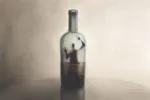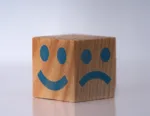What You Need to Know About Each Type of Bipolar Disorder

We have days when it feels like our mood is endlessly shifting. Maybe we’ll wake up annoyed and tired because we went to bed so late. Then, we’ll turn happier as we sip a good cup of coffee. Then, a confrontation with a coworker can make us feel uneasy. Returning home makes us feel calm.
It may feel like your day involves a roller coaster of emotion and energy levels, but these feelings are normal and all stem from stimuli around us. For someone with bipolar disorder, extreme shifts in emotion aren’t predictable or precipitated by something around him or her.
Understanding bipolar disorder
Bipolar disorders are mental health conditions that are characterized by extreme mood swings. They can be identified by high periods (mania or hypomania) and low periods (depression). If you’ve struggled with mood swings that seem excessive or make daily life feel impossible, you may be struggling with undiagnosed bipolar disorder.
Everyone has experienced sudden changes in mood, emotion and energy level, but these changes are typical reactions to our thoughts, experiences or environment. When someone with bipolar disorder has a mood shift, the root of it is neurological.
If you or someone you know changes moods with no apparent cause, there may be a mental health condition underlying this behavior. Here’s what you’ll want to know about the three different types of bipolar disorder.
The three types of bipolar disorder
There are three main types of bipolar disorder, and each will be explored here. Bipolar disorders are generally lifelong conditions, though all types can be managed with the right treatment, medication and lifestyle changes.
Before diving into the types of bipolar disorder, it’s important to define mania, hypomania and depression and the symptoms that identify them.
Mania
Someone who has bipolar disorder will experience periods of either mania or hypomania, mania being the more severe of the two, and resulting in more distress in daily life. Here are common signs of a manic episode.
- Feeling elated
- High energy
- Feeling jumpy, hyperalert or ecstatic
- Low sleep needs
- Talking quickly
- Racing thoughts
- Making quick, impulsive decisions
- Increased interest in pleasurable activities
- Feeling proud of oneself
Depression
Depressive periods tend to appear similar to major depressive disorder but are interspersed with periods of high energy and emotion.
- Feeling down
- Low energy
- Needing more sleep or having trouble falling asleep
- Having trouble concentrating
- Thinking and acting slowly (lethargy)
- Failing to make decisions or take action
- Disinterest in things that would normally be enjoyable
- Feeling hopeless or worthless
- Thoughts of death or suicide
Bipolar disorder type 1
Bipolar disorder type 1, clinically referred to as Bipolar I is characterized by periods of mania that last at least a week (for the majority of the day, almost every day) coupled with depressive periods that last about two weeks. A person with bipolar disorder type 1 may experience numerous cycles of mania and depression.
Bipolar disorder type 1 is notable by severe episodes of mania that sometimes trigger a break from reality (psychosis). It is not uncommon for a person with Bipolar I to be hospitalized as a result of a manic episode.
Bipolar disorder type 2
Bipolar disorder type 2 is similar to bipolar disorder type 1 in that a person with this condition will experience periods of hypomania and depression. Generally, though, Bipolar II is less severe. A person with Bipolar II will never have had a period of mania.
Bipolar disorder type 3
Bipolar disorder type 3 is called a cyclothymic disorder. This mental illness has periods of hypomania and depression, but they are still less intense than Bipolar II. While the severity of the highs and lows is lower than the other types of bipolar disorder, this disorder occurs over a longer period of time (at least two years).
As one goes through the bipolar disorder types, the intensity of the high and low episodes decreases. However, bipolar disorder type 2 and 3 can still be dangerous and cause significant distress due to prolonged depressive periods.
Whether you think you’re facing bipolar disorder type 1, 2 or 3, you’ll know that the condition is serious enough to warrant diagnosis and treatment when it causes functional interference in your daily life. Thus, if work, school, relationships or normal tasks are too hard to complete due to your symptoms, it’s time to get help.
Treatment for bipolar disorder
There are numerous treatments for bipolar disorder that have been found to be effective at reducing symptoms and improving quality of life. If you’re interested in finding healing, you’ll want to meet with a mental health professional to start a bipolar disorder test and get an assessment for the most appropriate level of care.
Get help for co-occurring disorders
It’s common for someone who is affected by bipolar disorder to struggle with substance use. If you’re dealing with co-occurring disorders, you deserve treatment that can address both struggles at once.
Silvermist Recovery can offer you the mental health support you need during your recovery. Call today to get help for mental illness, substance use or both.






